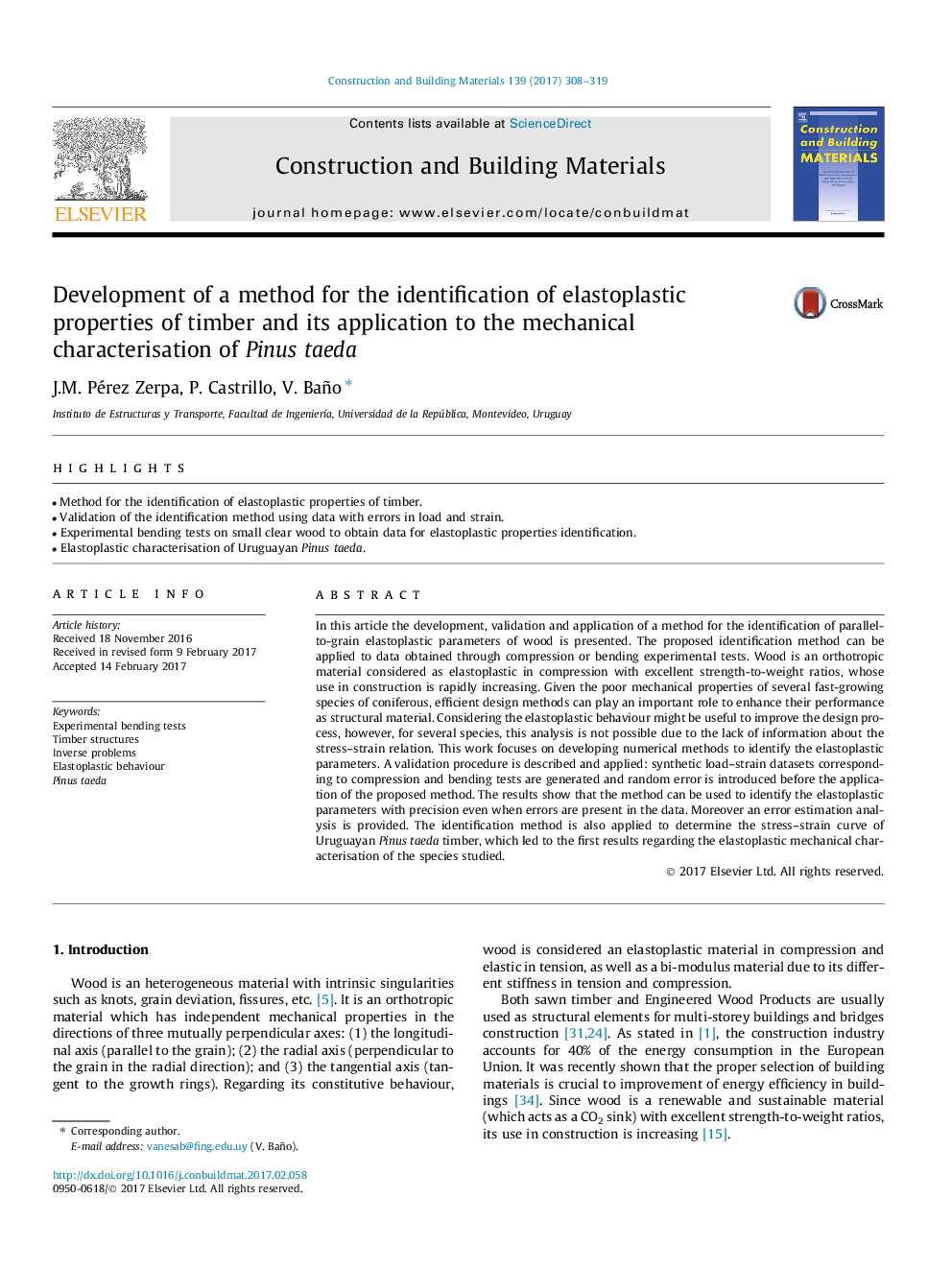| Article ID | Journal | Published Year | Pages | File Type |
|---|---|---|---|---|
| 4913503 | Construction and Building Materials | 2017 | 12 Pages |
Abstract
In this article the development, validation and application of a method for the identification of parallel-to-grain elastoplastic parameters of wood is presented. The proposed identification method can be applied to data obtained through compression or bending experimental tests. Wood is an orthotropic material considered as elastoplastic in compression with excellent strength-to-weight ratios, whose use in construction is rapidly increasing. Given the poor mechanical properties of several fast-growing species of coniferous, efficient design methods can play an important role to enhance their performance as structural material. Considering the elastoplastic behaviour might be useful to improve the design process, however, for several species, this analysis is not possible due to the lack of information about the stress-strain relation. This work focuses on developing numerical methods to identify the elastoplastic parameters. A validation procedure is described and applied: synthetic load-strain datasets corresponding to compression and bending tests are generated and random error is introduced before the application of the proposed method. The results show that the method can be used to identify the elastoplastic parameters with precision even when errors are present in the data. Moreover an error estimation analysis is provided. The identification method is also applied to determine the stress-strain curve of Uruguayan Pinus taeda timber, which led to the first results regarding the elastoplastic mechanical characterisation of the species studied.
Related Topics
Physical Sciences and Engineering
Engineering
Civil and Structural Engineering
Authors
J.M. Pérez Zerpa, P. Castrillo, V. Baño,
